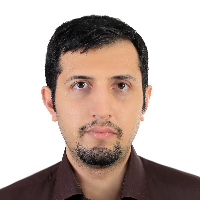Signs of Art Immigration in Tehran’s Civic art During the Pahlavi Period: A Case Study of Caucasian Refugee Architects and Sculptors
Tehran, as the capital, symbolizes the memory policy of the Pahlavi era. Tehran's urban memory itself reflects all the struggles and conflicts of the identity syndrome. These conflicts have existed even among the leading architects and sculptors of that era. But the Caucasian refugees architects and sculptors found unprecedented opportunities in the Pahlavi era to create civic art. These artists were previously acquainted with modern western design for their stay in the Tsarist and Ottoman Empire, and many of them were educated in Europe. With this cultural background, these artists were not accepted by traditional artists, and on the other hand the pressure of modernization was a threat and an opportunity for them at the same time. Armenian architects took the pioneering the movement of architectural modernism by building public buildings, and Azeri sculptors returned to the art of the Achaemenid and Sassanid arts by making urban sculptures. Tehran combination of visual symbols of urban memory of Armenians, Assyrians, Modern and Persia. In this article, fifteen works (including buildings and statues) of the Pahlavi period were studied by the method of semiotics of visual symbols. The Pahlavi memory policy has left a combination of Armenian and Azeri identity memory with archaism in urban memory. This combination has many Christian and Armenian symbols that are a cultural heritage and an example of Iranian modernity in art. It is hoped that such research will lead to a serious review of policies for the conservation and reconstruction of heritage district.
-
The Sociocultural Contexts for Women’s Inclination Toward Emerging Patterns of Religiosity (Case study: Mysticism, Success and Yoga Classes in Tehran)
Mohammadtaghi Karami Ghahi, *, Samira Nouri
Journal of Social Sciences, -
State of Exception the Coronavirus and Medical Dominance of Popular Memory (A Case Study of the Instagram Network)
Saeeid Zokaei, *, Samira Nouri
Journal of New Media Studies,



